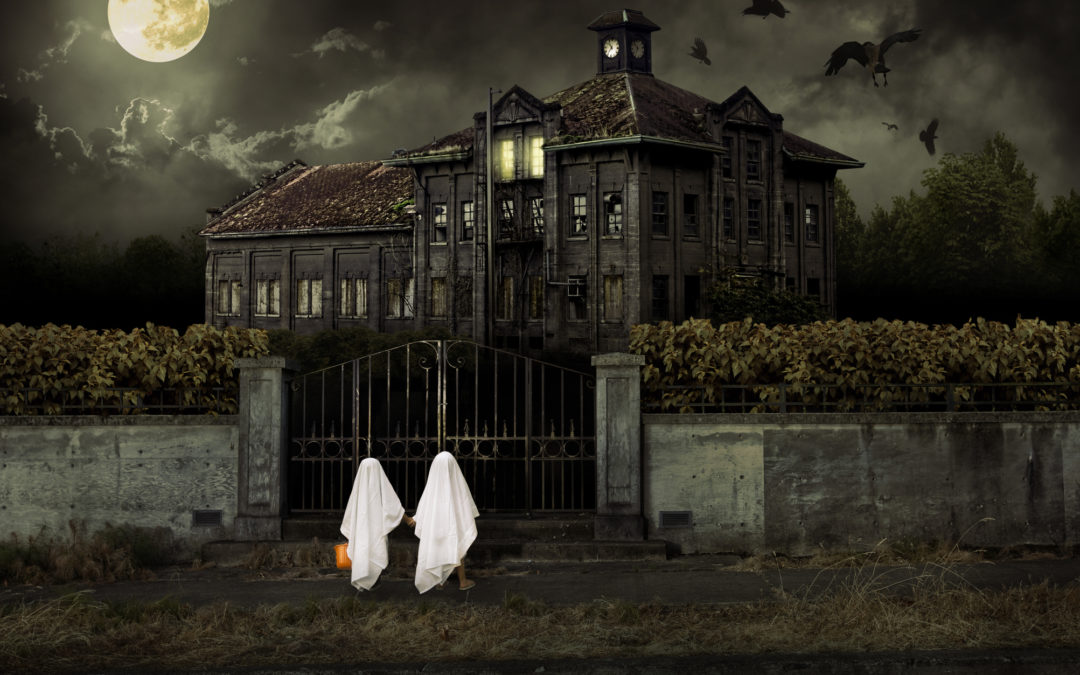Happy Halloween. Or, for my friends of the ancient pagan Celts, with whom the ceremonies originated, Happy Samhain. Or for my Christian friends, Happy All-Hallows-Eve-Before-All
CHANGING SEASONS AND THE DEAD
It’s no secret that most of what we today consider “holidays” are modern co-options and transformations of ancient pagan festivities and sacrificial rituals, all of which originally were holy days of one kind or another. These ancient practices often focused on two phenomena that dominated life in every ancient culture: The endless, cyclical changing of the seasons, from Spring to Summer to Fall to Winter, and the ancestral dead.
These two phenomena, the seasons and the dead, from the ancient point of view, were connected one to the other. The seasons, which we now consider to be “natural” or part of “nature,” were viewed back then more as the work of often nefarious ghosts, spirits, gods, and other supernatural beings.
Ancient people knew, for example, that Spring had followed Winter, in years past. But there was always some doubt whether this time around the the icy cold of Winter would stay, or go away. As the Sun lowered farther and farther toward the Winter horizon, would it disappear forever? Or would the Sun come back to a high place and bring warmth with it? People weren’t sure. That’s why it made sense to offer sacrifices and gifts to gods, spirits, and ghosts, as insurance policies, of sorts, or bribes, to make sure Spring and then Summer were returned.
Strange as it sounds to us, today, nature—though all around us and in us—had to be discovered, and explored. There was a time when the concept of nature was unknown to human minds. Figuring out what nature is, and what the natures of various beings are, was the original purpose of the great intellectual enterprise known as “philosophy.” The philosophic quest for knowledge and the study of nature, at least for the ancient Greeks, were seen as two sides of the same coin, united and inseparable.
Socrates, Plato, and Aristotle were all interested in knowing, as well as humanly possible, that which is natural, which they contrasted with that which is conventional or made by human art and technology. The great but not well-known thinker Jacob Klein once gave a lecture and later published an essay titled, “On the Nature of Nature,” where he described the discovery of nature as one of the most important human discoveries, if not the most important, in history.
SAMHAIN
It is no coincidence that Samhain, the forerunner of Halloween, occurred in late Fall, after the harvest was complete, and just before the onset of deadly winter cold. Ancient pagans were convinced that the Spirit of Death was especially active, roaming the Earth at this time, because, after all, the vegetation all around them was wilting and dying right before their eyes. Of course the Spirit of Death was present and looking for his next victims!
And if the Spirit of Death was nearby, they reasoned, then it was likely that the spirits of those whom Death had already claimed might be nearby as well. What was unknown was whether those spirits of the dead had good intentions or ill. So, to avoid being identified and possibly marked for early death, many ancient pagans dressed as if they were already among the dead—hence the origin of dressing in “costumes” as ghosts and other spirits of those who were formerly alive and are now dead.
(The single best account of which I know describing the central and supreme importance of the ancestral dead for every ancient regime is Fustel de Coulanges’s beautiful little book, The Ancient City, first published in 1864.)
To appease the “real” ghosts and spirits, including the Spirit of Death himself, many ancient people would leave offerings, gifts, and sacrifices such as food or slaughtered animals. And, sure enough, Death usually accepted these offerings, evidenced by the fact the food and dead animals left as gifts succumbed to the power of Death over the coming days. From the animals sacrifices that were burned, smoke rose up to the heavens. And the food gifts unburned soon deteriorated into nothing.
This is the origin of offering “treats” on the night that only much later become known as All-Hallows-Eve, and then Halloween.
HALLOWEEN, ALL-HALLOWS’-EVE, & ALL SAINTS DAY
Before one mocks the rituals of ancient people, however, consider their tremendous and regular success: Through ritualistic sacrifices every Fall, like Samhain, and more in the Winter (some of which provided the ritualistic ceremonies, such as decorating evergreen trees, for the later Christian holiday of Christmas), the Spirit of Death was indeed appeased.
Sure enough, Spring eventually returned and with it, the Sun. The return of vegetation in the Spring meant the Spirit of Life had returned, and the ancients rejoiced with celebrations including signs of new life, such as baby bunnies and fuzzy little chicks (Easter, anyone?), as well as fertility rituals to ensure the perpetuation of a city, tribe, or clan.
And so the seasons revolved, round and round, over and over, like a wheel in endless motion, just as the regular human rituals were practiced over and over for centuries that eventually blurred into millennia. The only hope of escaping this seemingly endless pattern was the idea of a Savior who might offer a better way of eternal life. And indeed many people in the West thought such a Savior had finally come with the fateful events that began quietly in Bethlehem and concluded with blood-drenched drama at Gol’gotha, otherwise known as Calvary.
And henceforth began the process of Christianity transforming and re-purposing many ancient pagan rituals, including Samhain, the ancient predecessor of All-Hallows’-Eve, marking the night before All Saints Day, and then Halloween.

